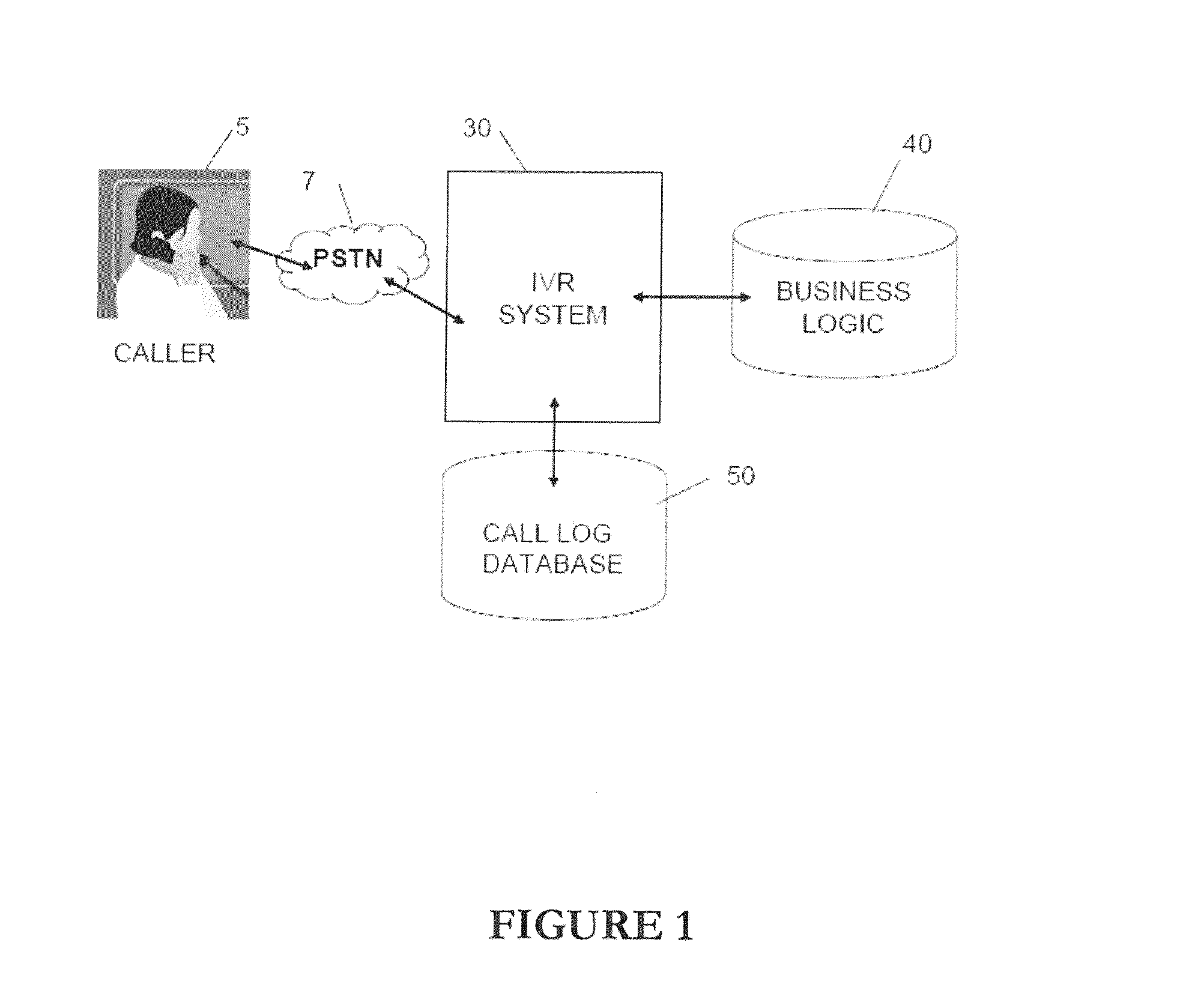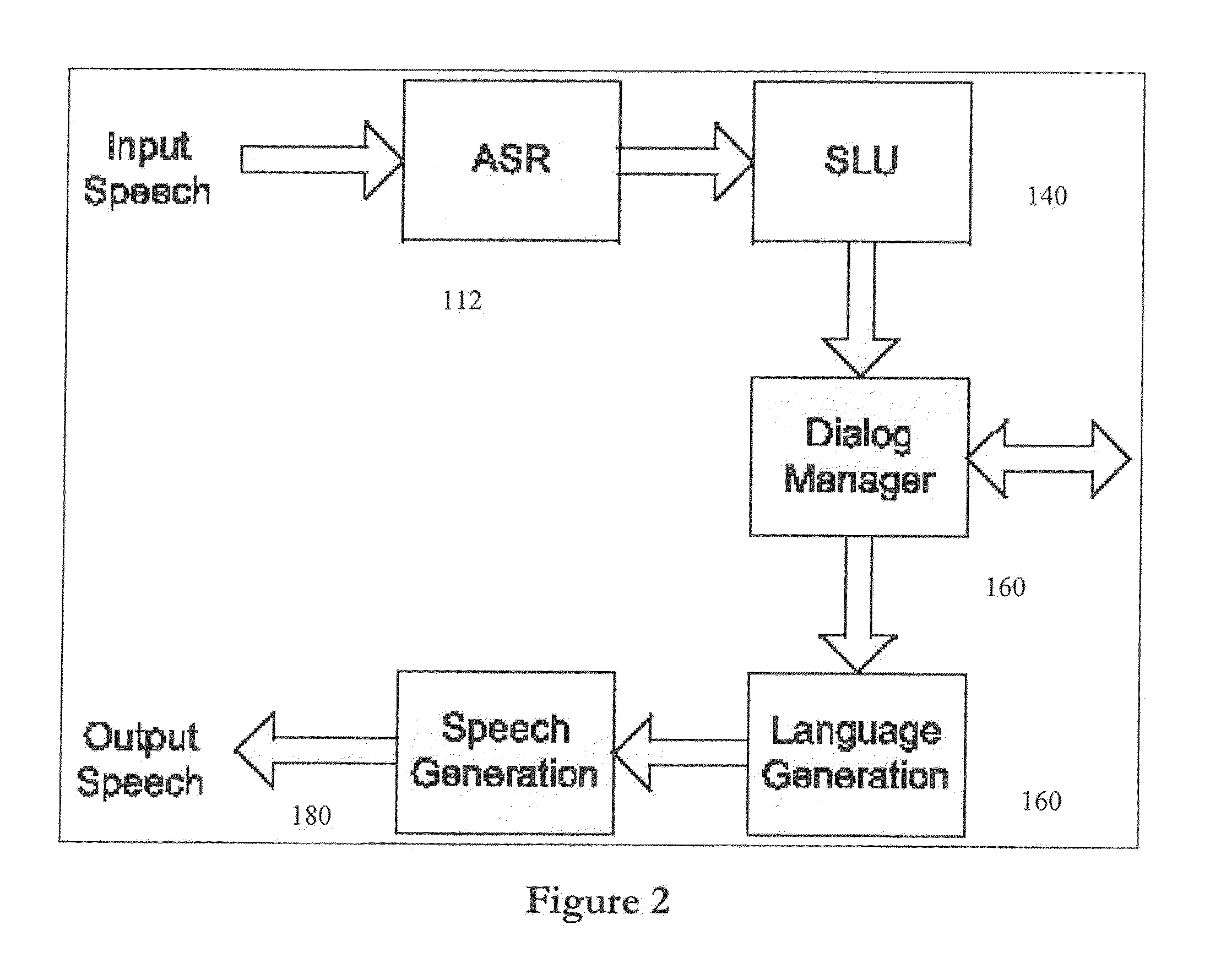System and method for optimizing call flows of a spoken dialog system
a spoken dialog and call flow technology, applied in the field of systems and methods of automated spoken dialog interaction systems, can solve the problems of unintentionally eliciting out-of-scope utterances from callers, and the complexity of automatic spoken dialog systems is often larg
- Summary
- Abstract
- Description
- Claims
- Application Information
AI Technical Summary
Benefits of technology
Problems solved by technology
Method used
Image
Examples
example 1
[0156]In a first example, three decision modules are applied to a cable television troubleshooting application, one four-way split and two two-way splits. Table 1 contains the experimental properties. As the experiment was based on less than 40,000 calls, with a single exception, none of the decision modules was found to perform statistically significantly worse than its competitors. Only one decision module of the four-way split resulted in a probability of less than 1%. Despite this lack of data to make final decisions, the adapted probabilities resulted in an overall performance gain of ΔR=29.4 s (for the underlying reward function, see Equation 4) as compared to the baseline system which used equiprobable decision modules.
[0157]
TABLE 1Corpus statistics decision module experiment#calls (tokens)38.004TA5.000 sR baseline253.4 sR after contending282.9 sΔR 29.4 s
example 2
[0158]System and Decision Modules
[0159]Seven decision modules were implemented in five commercial spoken dialog systems that processed 2.9 million calls. A brief overview of the decision modules and systems evaluated is given, followed by a presentation of data facts and results.
[0160]1. Cable TV Troubleshooting, Provider X
[0161]Three decision modules were put into production at one of the call centers of a cable TV provider. The dialog system in question is a TV troubleshooting system able to remotely reset cable boxes, help with bad picture quality or no picture at all, poor audio quality, the channel guide, the remote control, error messages, as well as other technical problems.[0162]C1. Call-reason disambiguation. Compare different strategies (open-ended prompt, yes / no question, directed menu) for collecting the technical problem the users are having with their cable TV.[0163]C1a. Please tell me the problem you are having in one short sentence.[0164]C1b. Are you calling because ...
example 3
[0211]Example 3 describes large-scale implementations of 26 decision modules in 10 commercial spoken dialog systems, including those of Example 1 above, that processed about 15 million calls. A brief overview of the decision modules and systems evaluated is given, followed by a presentation of data facts and results.
[0212]Systems and Decision Modules
[0213]This section briefly describes dialog systems and decision modules analyzed. All the considered systems provide either technical support or FAQs for customers of cable companies. Some of the decision modules were implemented in different applications. Since the behavior of a decision module can differ considerably depending on the specific customer (as exemplified in the Data and Results Section below), results are distinguished by customer ID (A through E).
[0214]1. Cable TV Troubleshooting
[0215]The cable TV troubleshooting application helps callers to resolve problems related to missing or bad picture, audio quality, remote contro...
PUM
 Login to View More
Login to View More Abstract
Description
Claims
Application Information
 Login to View More
Login to View More - R&D
- Intellectual Property
- Life Sciences
- Materials
- Tech Scout
- Unparalleled Data Quality
- Higher Quality Content
- 60% Fewer Hallucinations
Browse by: Latest US Patents, China's latest patents, Technical Efficacy Thesaurus, Application Domain, Technology Topic, Popular Technical Reports.
© 2025 PatSnap. All rights reserved.Legal|Privacy policy|Modern Slavery Act Transparency Statement|Sitemap|About US| Contact US: help@patsnap.com



